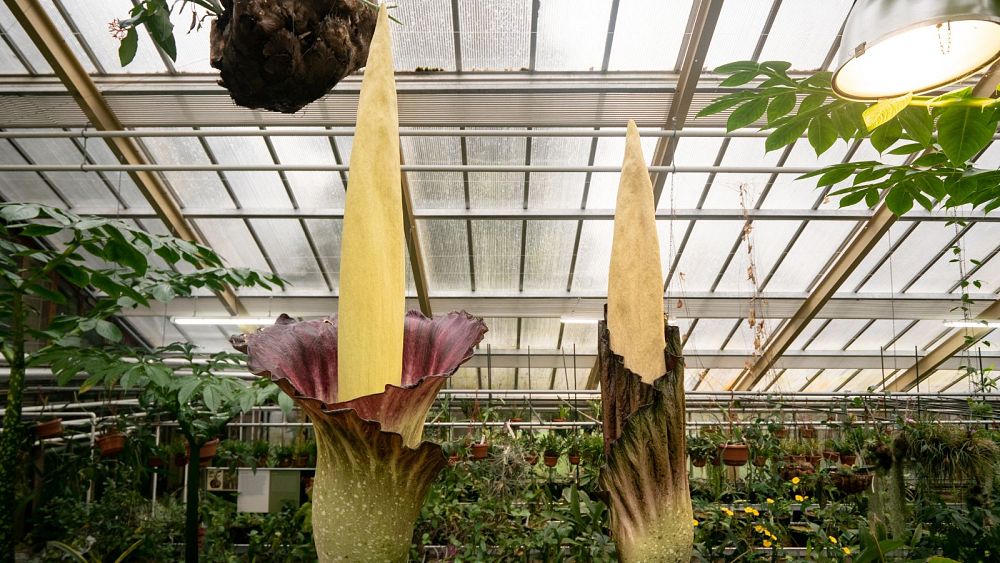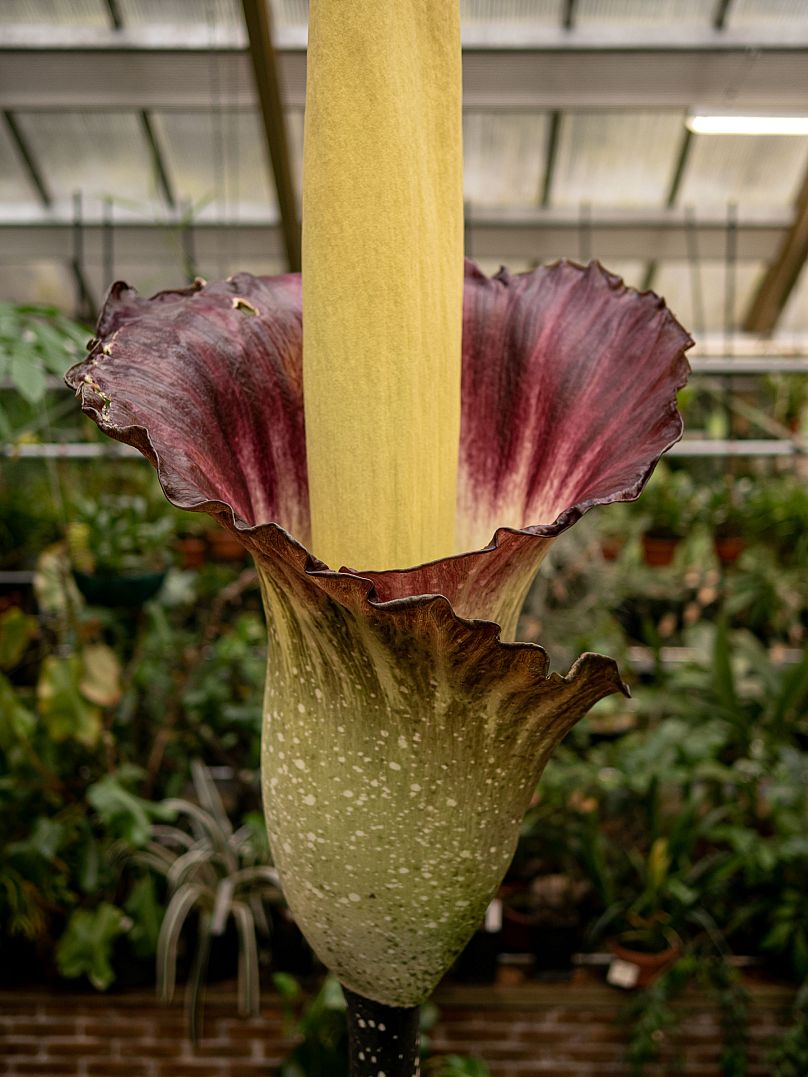
A giant ‘penis plant’ has bloomed for the first time in the Netherlands.
The Amorphophallus gigas — which literally translates as ‘giant shapeless penis’ — became fully erect at Leiden’s botanical garden at the end of February, followed by a second plant days later.
These eye-catching species only flower for two days, and are now looking rather limp in the garden’s Tropical Glasshouse.
Few botanical gardens have this species, which is native to Indonesia’s Sumatra island, in their collection.
“We were very lucky, because we had not one, but two specimens in flower at (almost) the same time,” a spokesperson for Hortus botanicus Leiden tells Euronews Green via email.
“This gave visitors the unique opportunity to view this plant in flower for double the time, because the flowering time on this species is very short.”
What’s so unusual about the penis plant?

You can still see most of the ‘inflorescence’ — the complete flower head of the Amorphophallus gigas — in Leiden.
But the rare tropical plants have withered from their fleeting glory when they stood tall at more than three metres. And another striking sensory feature has diminished too: their pungent smell, likened to rotting flesh.
“When it flowers it emits a very foul scent, meant to attract flies, which are their pollinators in the wild,” explains the garden spokesperson. “It is supposed to resemble the scent of carrion, and can be compared to the scent of a dead mouse (but much stronger).”
How was the penis plant pollinated?
As the first Amorphophallus gigas specimen reached full bloom on 1 March, the Hortus’s head of horticulture Rogier seized his chance.
Armed with pollen from a previously flowering penis plant (the garden has a whole collection), he reached deep down into the sheath-shaped bract (known as the spatha) to pollinate the female flowers at the bottom of the spadix — the fleshy, phallic looking part.
View this post on Instagram
The next day, Rogier and volunteer Rudmer cut two windows in the bract to reach the male flowers, which by then had also produced pollen. This was used to pollinate the neighbouring Amorphophallus gigas, which bloomed on 4 March.
Now the horticulturalists are waiting to see if their labours have paid off with seeds. With such fresh pollen, it’s very likely that the second plant has been successfully pollinated.
But as the flowering pair were a first for the Netherlands, pollen from another species of penis plant, Amorphophallus titanum — which bloomed in the garden last summer — was used to pollinate the first A. gigas. It’s not yet clear whether the experiment has worked, says Rogier.
It’s still hoped that both plants will produce seeds that can be dispersed in botanical gardens worldwide.
Why are penis plants so rare?
The Hortus has a stunning collection of Amorphophallus, which are used for scientific research, including the Amorphophallus titanum which bloomed last August after a dry spell since 2009.
A rare Amorphophallus decus-silvae also hit the headlines when it bloomed in 2021.
The striking plants often protrude into the news globally. When an A. titanum bloomed at Chicago Botanical Gardens in 2015, thousands of people queued up to get a glimpse and a whiff of the plant, which has the largest flower structure on earth.
View this post on Instagram
A horticulturalist described it as smelling «like roadkill, a barnyard, a dirty diaper, very strong, a little bit of mothball smell too».
Otherwise known as the titan arum or ‘corpse flower’, this species is also native to Sumatra, where it grows in semi-shaded areas of the island’s western rainforests.
It is listed as endangered by the IUCN. A. gigas isn’t necessarily endangered in the wild too, says Rogier. But it shares the same severe habitat pressure as the titan arum, as more and more tracts of lowland forests are turned into palm oil plantations or cleared for logging.
And in old, stable forests, the A. titanum only rarely flowers, which increases its vulnerability.
